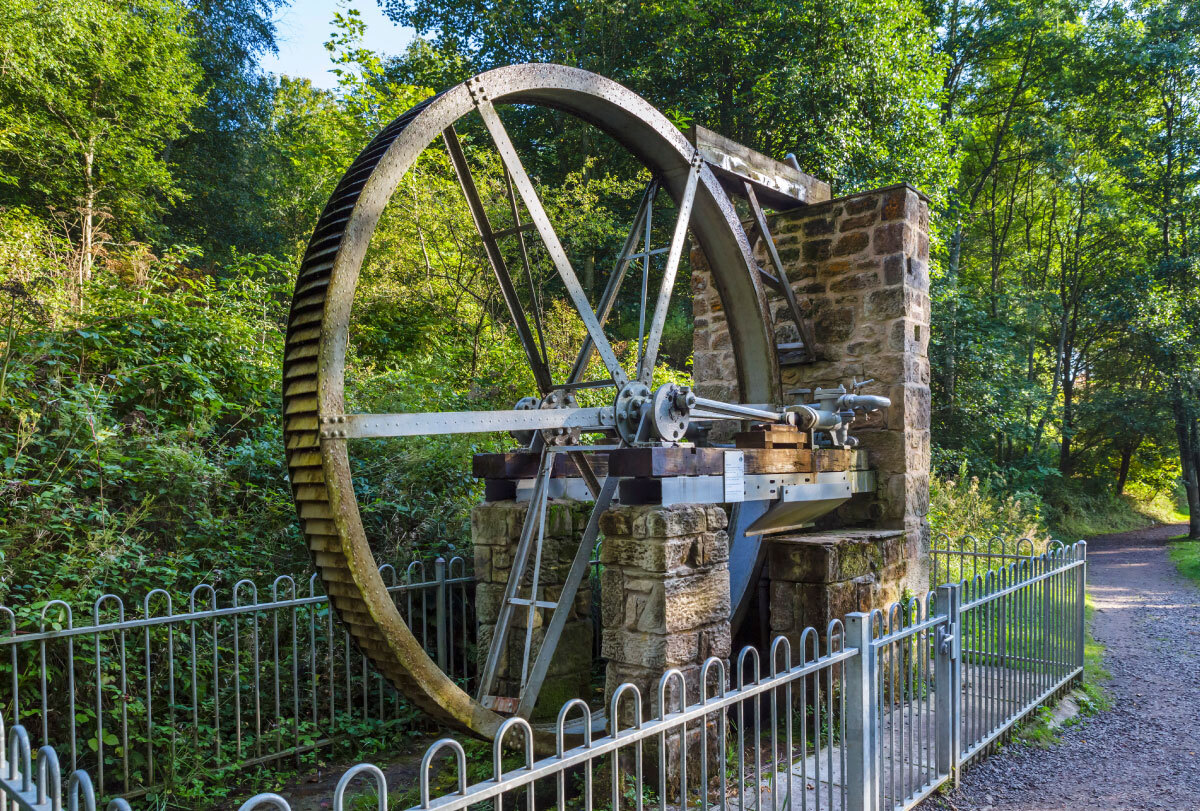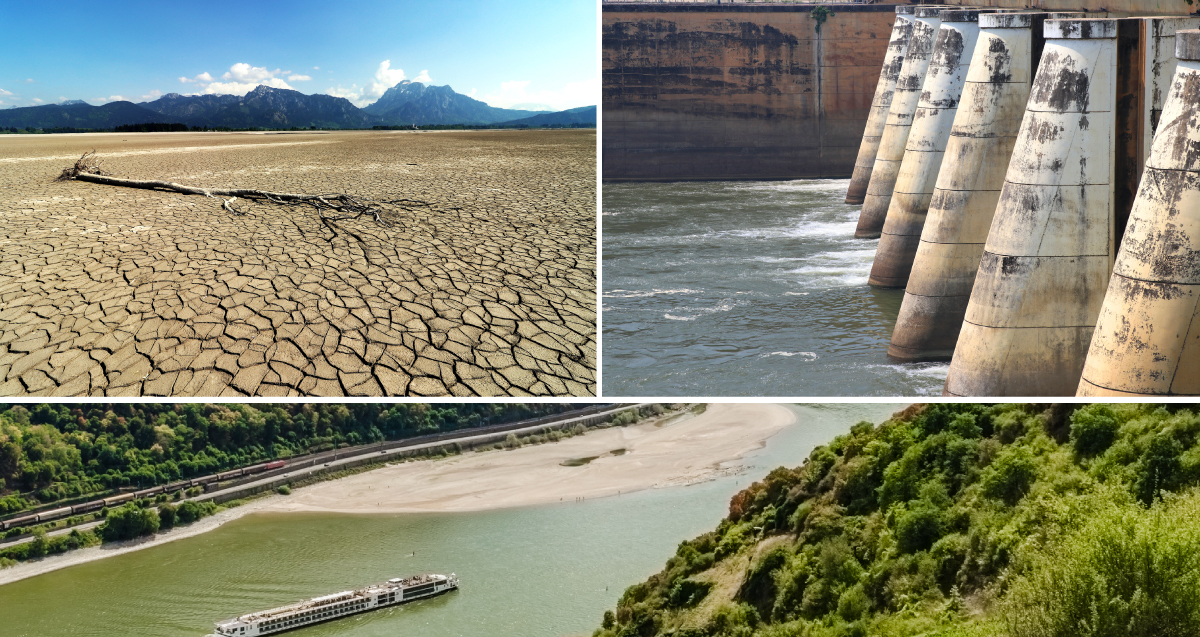Hydropower is one of the oldest and largest sources of renewable energy, which uses the water flow to produce electricity. Hydropower, or Hydroelectricity, works by building dams on rivers and reservoirs, where the water behind the dam is elevated. When the water streams down after the dam, it pours strongly on turbines that turn and generate electricity in the process.
Generating electricity from hydropower plants relies on smart water management, which costs less than most energy sources. This method uses a renewable energy source, just water, and today, 7% of U.S. households use electricity produced from hydropower plants.
The history of hydroelectric power plants started in 1878 when the first plant was built in England. Hydropower plays a significant role in fighting climate change because it has a lower carbon footprint. Electricity generated in dams doesn’t rely on fossil fuel, which causes less harm to the environment and has saved us 100 billion tonnes of greenhouse emissions during the last 50 years.
There are more than 20,000 hydropower plants in Europe made with advanced industrial automation, generating 13% of the electricity in Europe. Around 1,300 of them are in Switzerland, generating clean energy from the country’s rich rivers and lakes.
Premel is one of the region’s top industrial equipment suppliers powering hydropower stations to generate clean energy. These plants use advanced mobile traffic signal systems that provide on-time information to plan ongoing system maintenance and safety performance, minimising the waste for performance optimisation.
How Does a Hydroelectric Power Plant Work?
Inside a hydro-plant, you can find a powerhouse where all energy transformation in hydroelectric power plants happens. The main components of a hydropower dam are the head, power station and tail, where the elevated water enters, goes through the power station and exits to the lower land from the tail.
The power station has a complex hydro mechanical systems design that includes generators, turbines and transformers that activate as the water is discharged from the head and turn the kinetic energy into electricity.
As one of the leading general electromechanical equipment suppliers, we at Premel design Pelton, Francis, Kaplan and other turbines that follow ISO 9001 standards and efficiently use the water power by running at the “best point”.

Hydropower Global Trends and Top Findings
The hydropower sector has been developing steadily over the last year, and the installation of hydro plants has increased by 1.9% compared to 2020, increasing the global capacity to 1,360 gigawatts.
However, the Hydropower Status Report from the International Hydropower Association or IHA suggests that we still need to lower our reliance on coal plants to generate electricity because of their significant damage to the environment.
Despite the rich European nature with rivers and water sources, global companies in Asia and North America are leaders when it comes to introducing large-scale hydropower plants. China generated more than 80% of the hydropower globally produced in 2021 only.
This leaves China as a global hydropower leader, followed by Brazil, the USA, Canada and Russia, which means despite having trained engineers and technicians, Europe is still far from leadership in hydropower, probably because of relying on wind power.
How Does Hydropower Relate to Climate Change?
Management services engineering industries are the main drivers of climate change; we can generate power that either damages or aids the environment. As simple as that may sound, this process includes huge money expenditure and complex industrial service and maintenance planning.
According to the Hydropower Status Report, hydropower plants need to generate at least 30 gigawatts to fight the continuous temperature increase every year and 45 gigawatts to maintain the global temperature rise at 1.5°C. However, only 26 gigawatts were produced last year, which is still far from the global goal.
Moreover, the increasing global temperature due to climate change leads to increased water evaporation from rivers and lakes. Eventually, more water evaporating from rivers means less water streaming into hydropower plants and dams, reducing hydropower plants' efficiency.

Iran’s Climate Change Effort
Middle East countries face severe temperature rises due to climate change, which drives developments in hydropower generation. Karkheh I is a hydropower plant built on the Karkheh river basin in Khuzestan, Iran.
The plant has been active since 2002, producing 400 Megawatts of electricity. However, the ongoing climate changes are expected to seriously impact the efficiency of the Karkheh hydropower plant, where the river is experiencing drought and reduced stream.
Changes in the river’s water flow aren’t expected to significantly change power generation over the short term. However, power deficits are expected in the long term. Therefore, advanced power engineering and emergency power systems are required to generate power without compromising nature.
Premel offers a long-rooted experience in power plants automation to offer engineering solutions that generate clean energy while keeping in mind the threat of global water reduction.
Advantages and Disadvantages of Hydroelectric Power Plant
Hydropower stations are deemed the perfect choice to generate electricity, and if this is the case, then why doesn’t everyone start building hydroelectric plants? Let’s take a look at the advantages and disadvantages of hydroelectric power plants.

Advantages of Hydroelectric Power Plant
-
Clean source of energy that uses only water, without any fossil fuels.
-
Minimum greenhouse emissions to fight climate change.
-
Hydropower dams control floods.
-
Renewable energy sources rely on river streams, lakes and reservoirs.
-
Hydropower plants are adjustable to optimise production levels.
Disadvantages of Hydroelectric Power Plant
-
Impact on sea life by slowing water streams.
-
Construction costs can be higher to build dams on embankments.
-
Drought and reduced water streams can significantly affect productivity.
Conclusion
Hydroelectricity is one of the greatest technological successes, which requires quality engineering to optimise the plant's capacity to generate electricity without harming the environment. Keeping in mind the ongoing climate change, hydropower plants are the right answer.
Learn more about Hydroelectric Power Plants from Premel. We use our experience in hydropower, emergency power and program management to deliver industrial parts that guarantee maximum hydro mechanical systems delivery. In this process, sparing the environmental damage that’s being caused by other sources that generate electric power through fossil fuels.
Contact Premel to learn more about electrical panels and the other products and services they have to offer.
